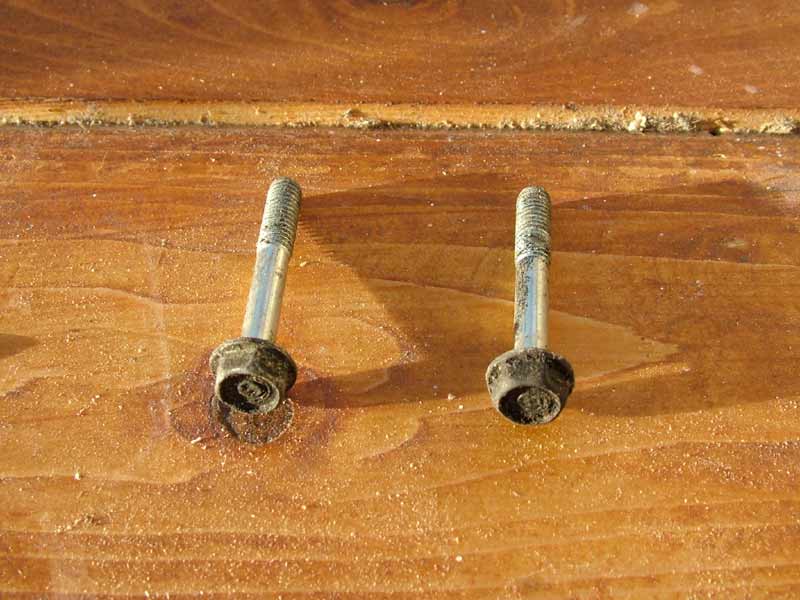
Bright Zinc Plating
In the past I have usually taken all of the zinc plated parts for a restoration to the professional Zinc Platers. When we lived in Lancashire this was to Turton Plating in Chorley - a good company now sadly defunct. Since moving to Orkney I have not found a suitable replacement and really don't want to post stuff South, and risk losing irreplaceable parts. With this in mind I bought a plating kit from the web some time back with the intention of having a go myself. The idea went on the back burner for a while until recently when I wanted to strip and re-build the engine from the 'Scottish' Honda 400/4. The bolts and clips were in a poor cosmetic state but very sound so I dragged out the kit from upstairs in the workshop to check what I would need. I had unfortunately removed the instructions for perusal when the kit first arrived - so they will be in a safe place to be found when I am looking for something else - but not now!
I contacted the suppliers, Gateros Plating and they sent a PDF copy by return email and answered my query about the anhydrous (without water) salts which had by now, absorbed so much moisture from the air, that they were now a liquid! 'Not to worry, just add them to the rest of the electrolyte and proceed' was their comforting reply.
The comprehensive kit is very easy to use and the results are wonderful but like all finishing processes - painting, polishing and plating - the key to a good result is in the surface preparation. This is fully explained in the instructions and I can't emphasise it strongly enough - DO NOT CUT CORNERS ON THE PREP! They provide a simple current controller in kit form so that you can regulate the current from a car battery or charger but I am fortunate that I have a stabilised power supply (second hand from eBay of course) on which I can control voltage and current - a bit of a luxury. I use this unit for all kinds of stuff and have brought back many bike batteries from the dead and also got Ni-cads to accept a charge which would not respond to an 'intelligent' charger.
The mixing of the chemicals is very straightforward school chemistry stuff but you will need to procure some caustic soda, de-ionised or distilled water plus some masonry cleaner (dilute hydrochloric acid) and a few plastic containers suitably indelibly labelled for safety's sake. The instructions are very explicit about the need for extreme safety and I would certainly go along with that and not leave anything around that an unsuspecting child or animal might come into contact with.
I have picked a couple of typical Honda engine bolts as an example of what can be achieved

Straight after removal this is quite typical of what we expect; the heads are covered in crud over light rust and the threads and shanks are showing signs of age too. A quick note about reclaiming bolts - check carefully that the threads are not damaged or stripped and that the heads are still going to work OK with your sockets/spanners - as far as I'm aware, there are no critical stretch bolts on these early fours - which would not be re-useable unless you are crazy - even coming from Yorkshire I ditch those or use them for lathe metal for punches etc.
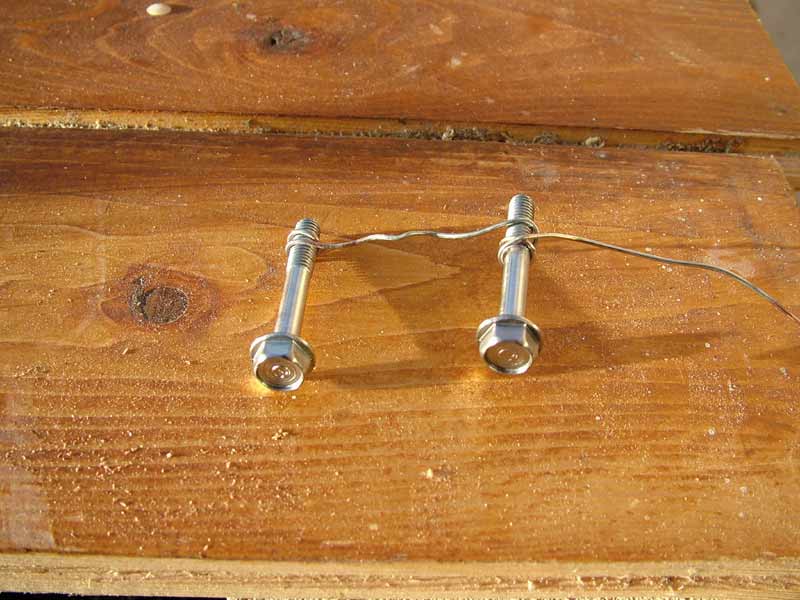
A few minutes with a wire brush in the pillar drill brings this result and time for a more detailed inspection - they obviously could not be left like this as they would rust by the next day!
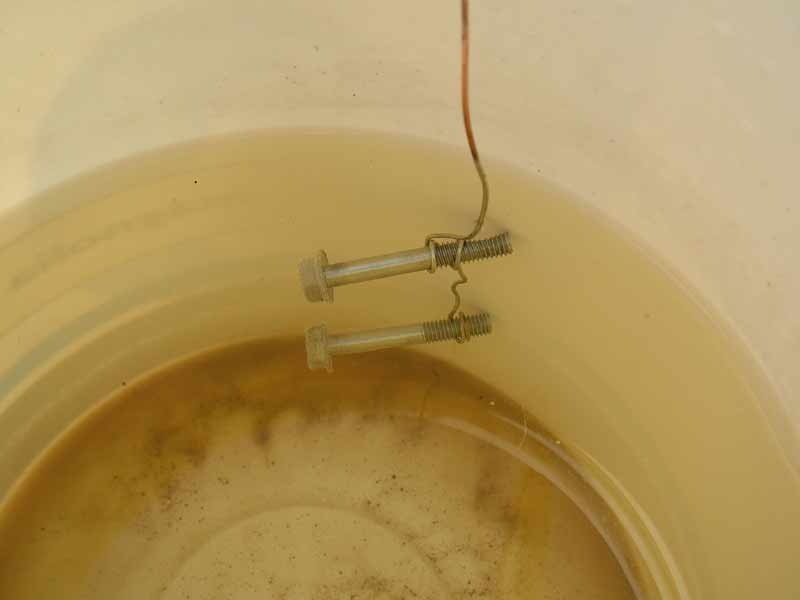
Tying them together with copper wire (I use old scrap bits of 1mm twin and earth stripped of insulation) they are now dangled in the caustic soda solution (Goggles, gloves, full chemical suit and boots, bomb proof chamber PLUS common sense!) for 5 minutes, followed by rinsing in clean water.
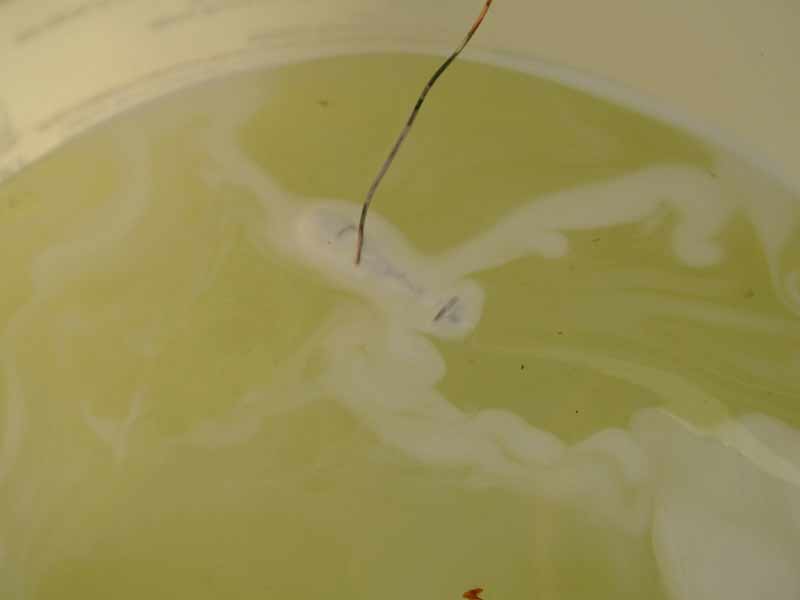
Next comes a 1 minute dip in brick/path cleaner (dilute hydrochloric acid) followed by another clean water rinse.
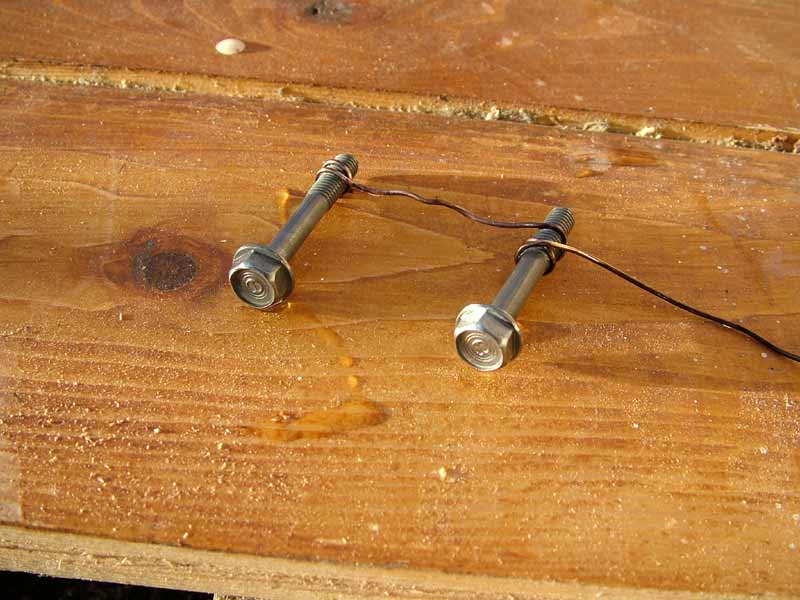
This is how they should look but you must now put them straight into the plating tank, otherwise they will rust before your very eyes!
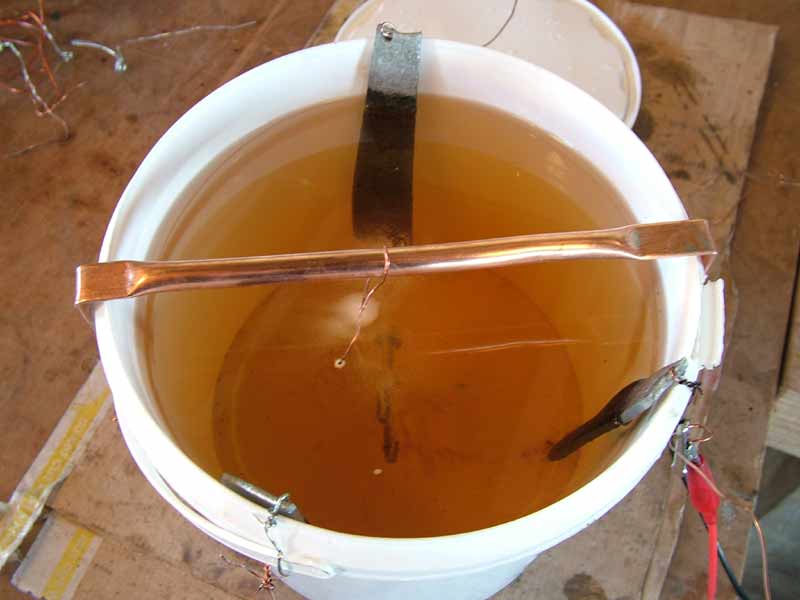
Dangled from a bit of 10mm copper tube flattened at the ends the plating starts. You can just about make out the 3 Zinc anodes supplied in the kit - these are connected together and then to the Positive (+ve) side of your supply. The Negative (-ve) is connected to the copper tube where the components to be plated are hung. You can see the plating taking place after a minute or so if you lift one out. If the temperature is below 15 degrees, then you can easily heat the electrolyte by standing the tank in a bowl of hot water.
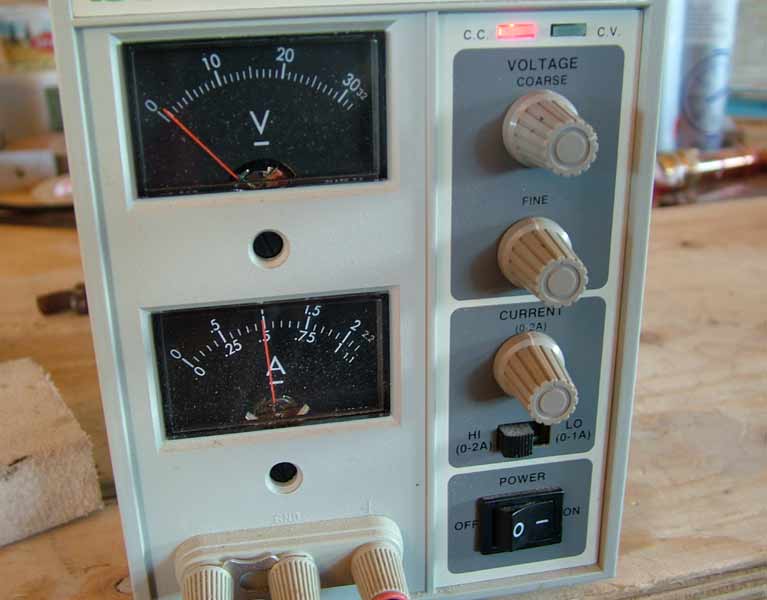
I find this setting about right for a few small bolts - the voltage settles at about 1 volt with this tank setup and I can vary the current between zero and 2 amps - if the current is too high you will end up with a rough looking surface and if it is set very low it will just take a lot longer to achieve a finish. It's best to aerate the electrolyte (the plating fluid you mixed up) and I don't have a convenient electric pump yet, so I used my bike track pump attached to a bit of tube going down to the bottom of the tank. If I raise the plunger on the pump, it falls very slowly under its own weight, releasing bubbles in the process. A few of these cycles do the trick and half an hour later your bits are ready for rinsing (er, so to speak!) I might experiment with a pipe connected to an over inflated spare wheel to release a stream of bubbles to avoid having the annoying noise of a pump.
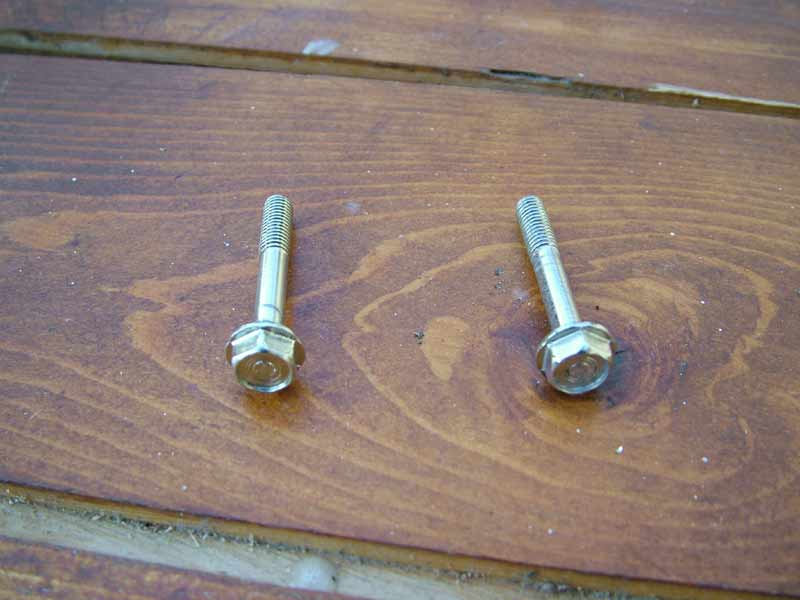
This is what you end up with and those Honda recessed head bolts need to plated hanging horizontally in the electrolyte to prevent an air pocket which you might get if they are suspended thread uppermost - remember the zinc migrates away from the Anodes and travels toward the object to be plated at the cathode. Now if you were to get distracted and forget to go and retrieve your precious bolts and left them in for a couple of hours - who's daft enough to that, I ask? - you will find a really rough looking component, but fear not! Just put it back in the second cleaning tub (hydrochloric acid - brick cleaner) and leave it for a while and your nice shiny bolt will be ready for re-plating properly. Try not to make a habit of it though as apart from wasting zinc, you will also muck up your chemicals.
This is just one man's way of plating, suffice it to say that there are many other kits on the market and I have no connection (other than being a customer) with Gateros Plating.